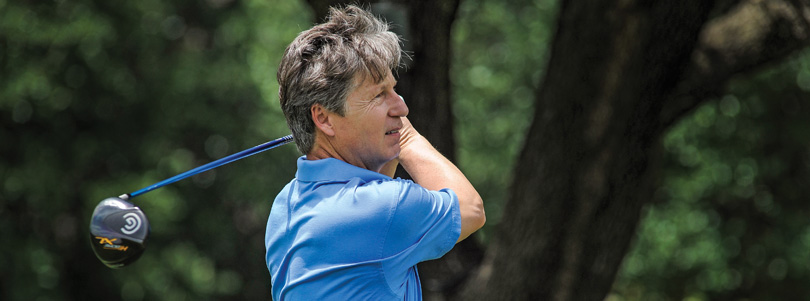Golf Science – Chamblee Decoded

Brandel Chamblee is a former PGA Tour player and a current commentator, writer, and lead studio analyst for Golf Channel. That means he is capable of analyzing golfers’ play from an insider’s view-point, having been-there-done-that. He is, moreover, not someone who merely makes desultory commentary like, “That player’s putting was not up to par today” or “This player looks like he’s aiming right of target”.
Chamblee is known for his extreme forthrightness and often ruffles feathers with some of his comments. However, when he opines on things golf-swing, it is obvious he is keeping up with the rapidly-evolving, ever-changing concepts about what is important, biomechanically, in a swing. Without a scientific background (he is a UT graduate in speech communication), Chamblee often has instincts that do not play him false and lead him to make remarks that are serendipitously rather scientific!
Given his critical remarks about several leading golfers’ swings, and his authoritative book titled “The anatomy of greatness: lessons from the best golf swings in history”, many must have been quite amused at a now-in-his-fifties golfer with hardly any time to play golf, signing up to qualify for the Senior Open Championship at the home of golf – the Old Course at St Andrews in Scotland. Brandel said to Sean Zak of Golf.com that he actually wanted to try and put into practice all the aspects of golf he had been studying for years, despite having last competed full-time on the Tour about 15 years ago.
So, how did Chamblee prepare for the event? Full swing? Short game? The physical and mental aspects of competing at the highest level? He managed a decent routine during the two months he had available to prepare for the event. On the occasional day off, he did 3-4 hours of full-swing practice in the mornings followed by 2-3 hours of short-game work in the afternoons. Practice was conducted in blocks, situationally, as he imagined he was playing on the course and then alternating that with some swing changes that he wanted to make.
The mental side was not neglected either. One of his goals was to have a clear mind before each shot, and to not be put off by conflicting thoughts. He pictured Tom Watson’s backswing and tried to make his own as full. He also visualized Gary Player’s swing, especially his trigger move of “unweighting his right heel during mid-downswing”.
Was his practice adequate? Was he as prepared as the other players in the field? It certainly all seemed to fall into place during his highly publicized success in qualifying for the event. However, during the main event, Chamblee did play it under several disadvantages. His equipment was described by Golf Digest as constituting an eclectic bag of venerable equipment. He himself realized how much a player’s “team” can contribute to the golfer’s success, “At the very least the team can take the sting out of traveling and at best can keep a player focused and sharp”. Finally, going in to the event he was putting well and so was at first reluctant to correct his stroke mid-event, and later it was too late.
Perhaps what everyone wanted to know was whether Chamblee’s much touted classic golf swing held up for him. He has frequently criticized modern professional golfers for neither swinging right nor training right and he has also said that their coaches make them worse, according to an article written about him in the Wall Street Journal, who termed him a “professional provocateur”.
His success in qualifying for one of the most prestigious senior events, while not even have all the cards stacked in his favor, will surely keep Chamblee believing that the Classic swing has much to say for it. He believes it is easier on the body and spreads the load of building and developing power over more time and over the entire range of the body. He also believes the long, unrestricted movement has much in common with some of the swing elements that are in vogue today, such as the shift to the trail side at the start, followed by a shift to the lead side to start the downswing and then a quick shift back to the trail side as the body rotates and extends.
While his rusty, untried-in-recent-years performance may not have held up under the pressure of high-level golf, having actually put his money where his mouth is will, if nothing else, give him a better perspective of what today’s players have to go through. It is also apparent from his post-event analysis that Brandel Chamblee is capable of an unbiased assessment of his own performance, understands the nuances of the swing and the game, and is often justified – and occasionally quite scientific – in his statements about his fellow professionals.



